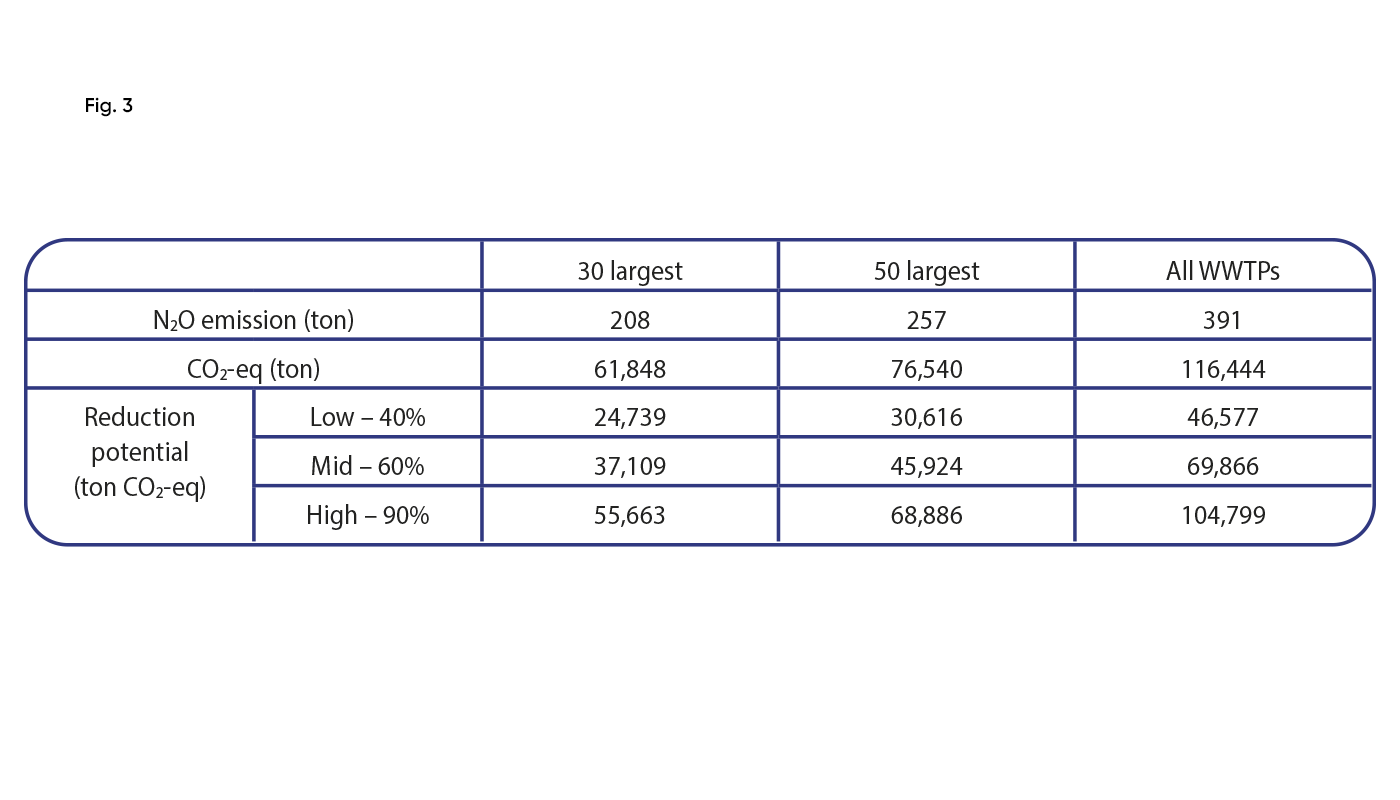
Climate impact from nitrous oxide emission - a Danish case
A Status on Emissions Monitoring
All larger Danish wastewater treatment plants (WWTPs) as well as many European plants strive for energy neutrality or even net energy production through energy savings and increased biogas production. However, ample scientific studies emphasize the importance of taking the WWTPs' emission of the greenhouse gas, nitrous oxide (N2O), into account to assess the environmental and climate impacts.
Toward climate neutrality
In Denmark, the government has announced process emission regulations, which will drive a gradual shift from energy neutral toward climate neutral. This serves as an example of how government or sectoral investments can strongly boost the shift towards climate neutrality in the water sector.
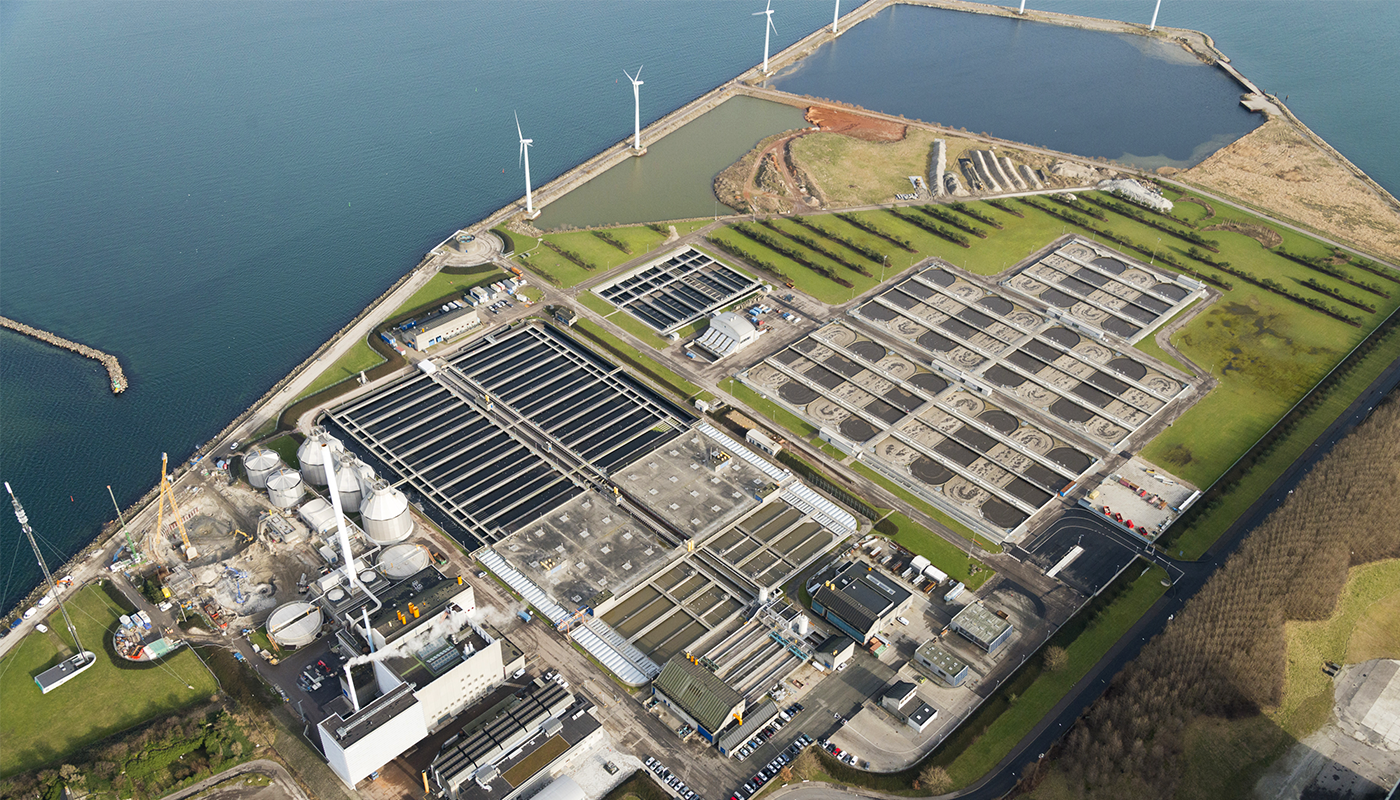
The Role of Wastewater Treatment Plants
One of the most important roles of WWTPs is the removal of nitrogen and phosphorous based nutrients. Otherwise, in large concentrations, this may lead to eutrophication of the receiving water bodies. With the EC’s Nitrates Directive and the Danish national water environmental strategies, WWTPs have reduced nutrients in the effluents significantly.
How N2O is formed
Microorganisms remove nitrogen by transforming ammonium (NH4+) to nitrate (NO3-) and subsequently to free molecular nitrogen (N2), which is emitted to the atmosphere. There are several intermediate chemical compounds and potential by-products in the reaction path from NH4+ to N2. One of these is N2O.
However, with the right optimization, there is no significant emission of N2O, as the compound is quickly transformed into other nitrogenous compounds. However, under certain operational conditions, an accumulation of N2O in large concentrations may occur. This leads to emissions that contribute significantly to the total climate impact (carbon footprint) of the WWTPs.
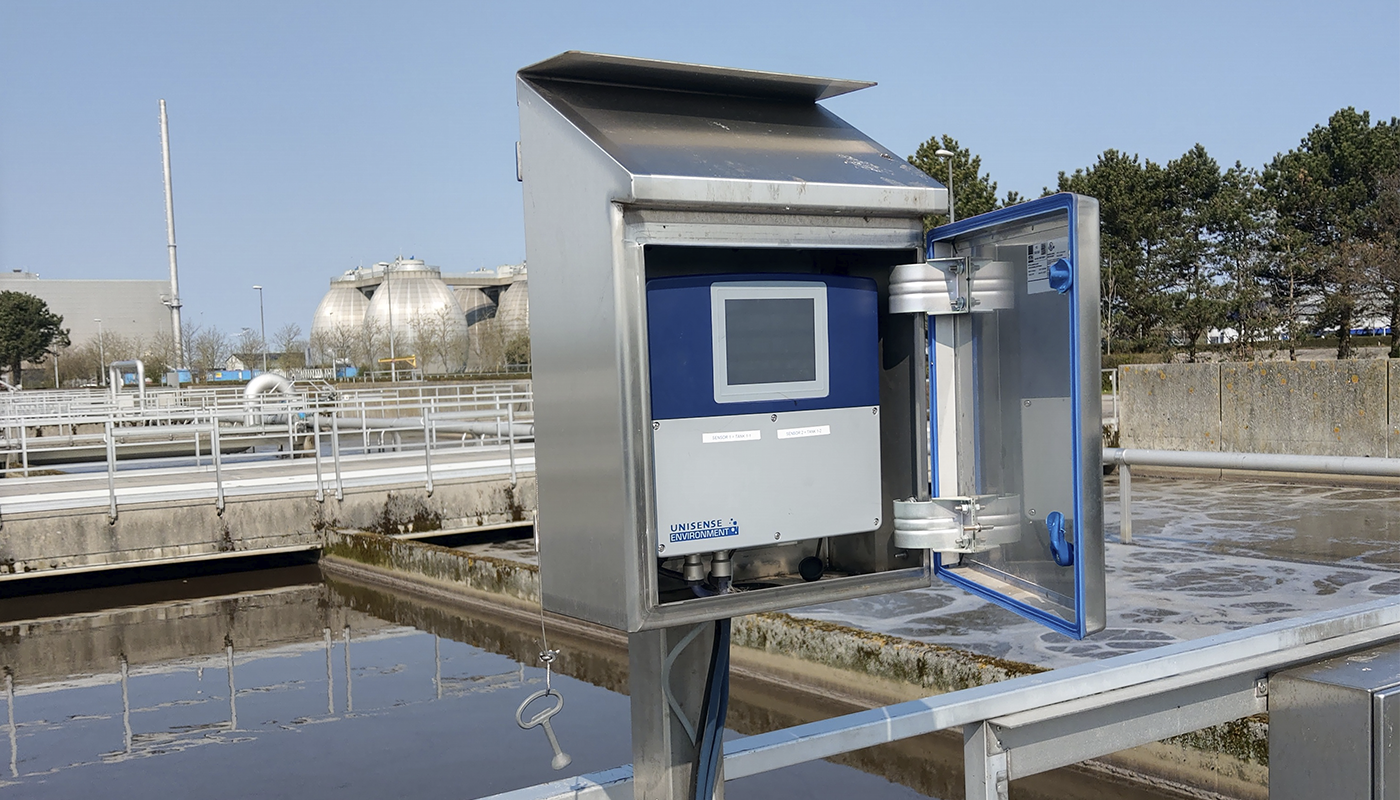
Nitrous oxide is 298 times stronger greenhouse gas than CO2
Several case studies have shown that the climate impact from N2O emission is comparable to, or even larger than, the climate impact from the energy used at WWTPs. When the WWTPs reduce their energy consumption, it becomes even more important to take N2O emission into account. This is especially because single-sided energy optimizations can be shown to increase the emission of N2O. Furthermore, in the future a substantial part of the electricity will be based on green sources, whereby the climate impact fraction from N2O will increase compared to present values.
Variations among WWTPs
Many studies indicate that there are strong variations of the N2O emissions among WWTPs. Recent efforts have expanded the knowledge of N2O emissions from Danish WWTPs. However, it is necessary to further monitor the N2O emission at individual plants to estimate the full potential for optimizations and climate impact minimizations.

Energy neutrality vs. climate neutrality
An energy neutral WWTP produces more energy than it consumes, or it is at least self-sufficient with sustainable green energy. But, a climate neutral WWTP has no or a negative carbon footprint of operation. This means that the energy and process related greenhouse gas emissions (fossil CO2, CH4 and N2O) are considered in the total carbon footprint.
2020 vs. 2030: CO2 emission
Figure 1 compares a present 2020 and future 2030 scenario of the contribution to the CO2 emission from WWTPs. Energy will increasingly stem from sustainable sources based on green technologies that significantly lower the CO2 emission from energy consumption. N2O will thus be a major contributor to the CO2 emission from WWTPs. To achieve climate neutral wastewater treatment, plants will need to focus on reduction of N2O emission instead of energy production. Thus lowering the climate impact from nitrous oxide emission.
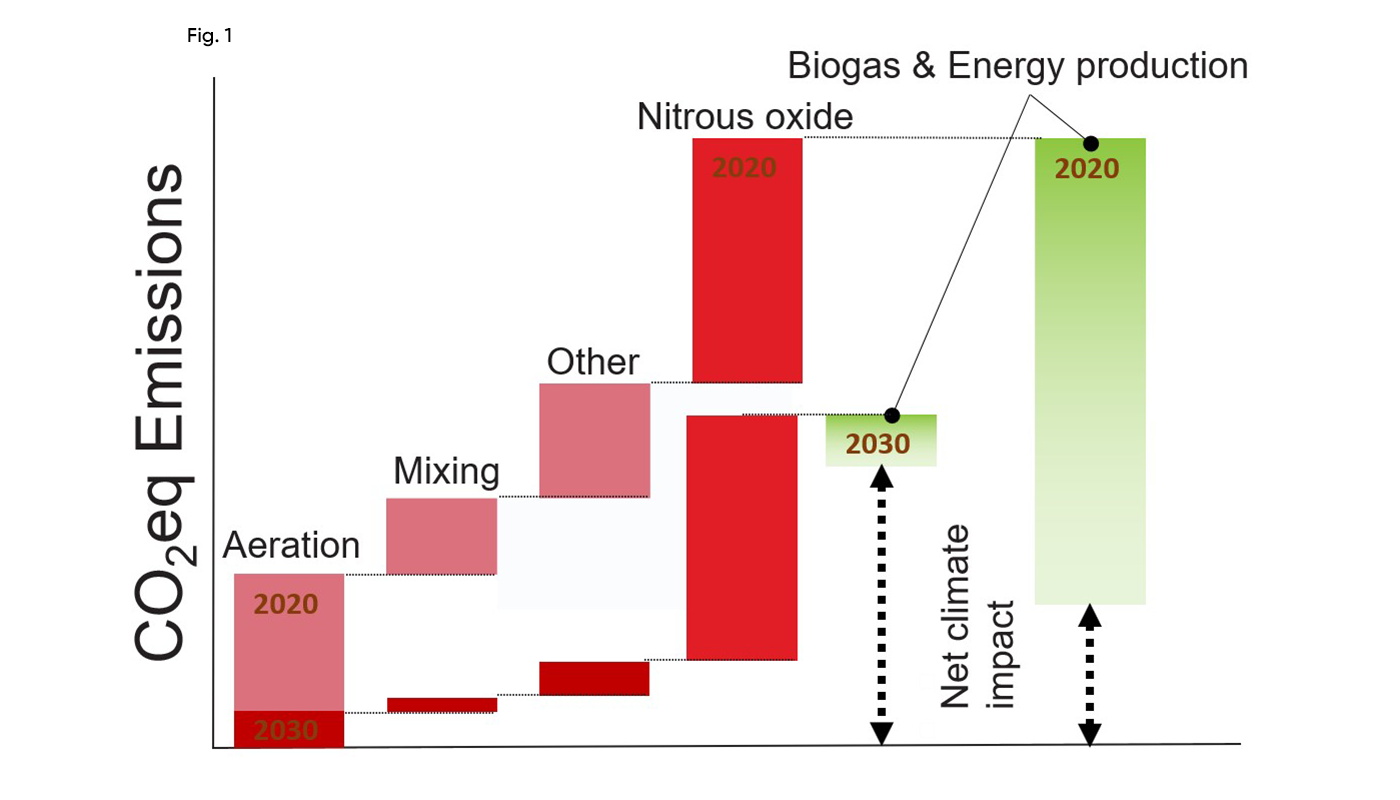
Distribution of Danish WWTPs
In Denmark >700 WWTPs treat a total of 7.3M person equivalents of wastewater yearly, totaling to 29,630 ton N. Figure 2 shows a size distribution of the plants. It is worth noticing that there is a long tail of very small plants and only a few larger and medium sized plants.
The larger WWTPs treat the bulk part of the Danish wastewater. The 30 largest plants account for 53% of the wastewater treatment, and the 50 largest plants account for 66%.
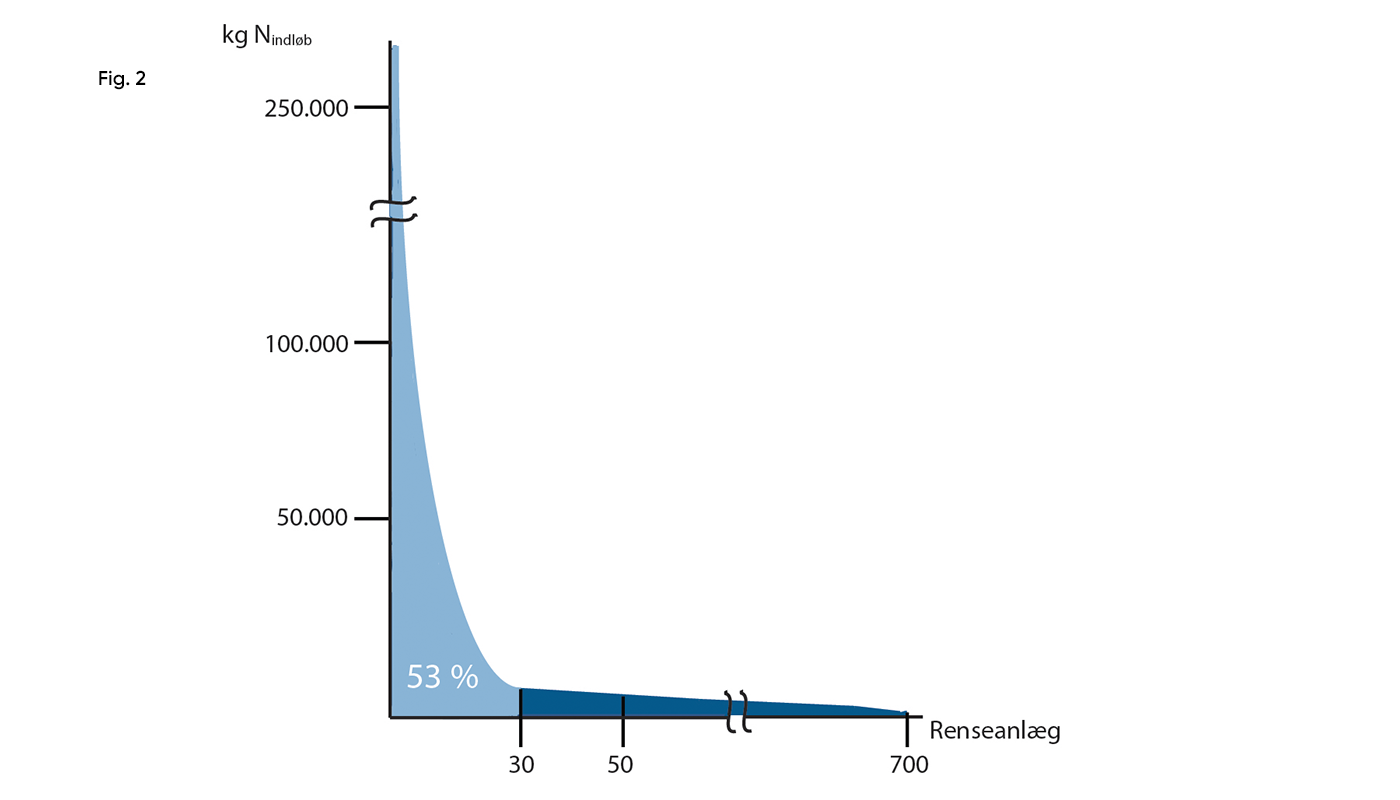
Emission from the large Danish WWTPs
To quantify the N2O emission from Danish WWTPs, the Danish Environmental Protection Agency (EPA) launched a 2-year project to collect data on N2O emissions from WWTPs. From 2018-2020, nine different plants monitored the N2O emission. The data showed that an average of 0.84% of the total influent N is released as N2O. With this info, we can calculate the total climate impact, which is shown in Figure 3.
Up to 90% reduction potential
Danish and international case studies have shown a span in the N2O reduction potential ranging from 25% to 90%. That is, if the plants continuously monitor for N2O emission and use the data as input to optimize the plant operation.
